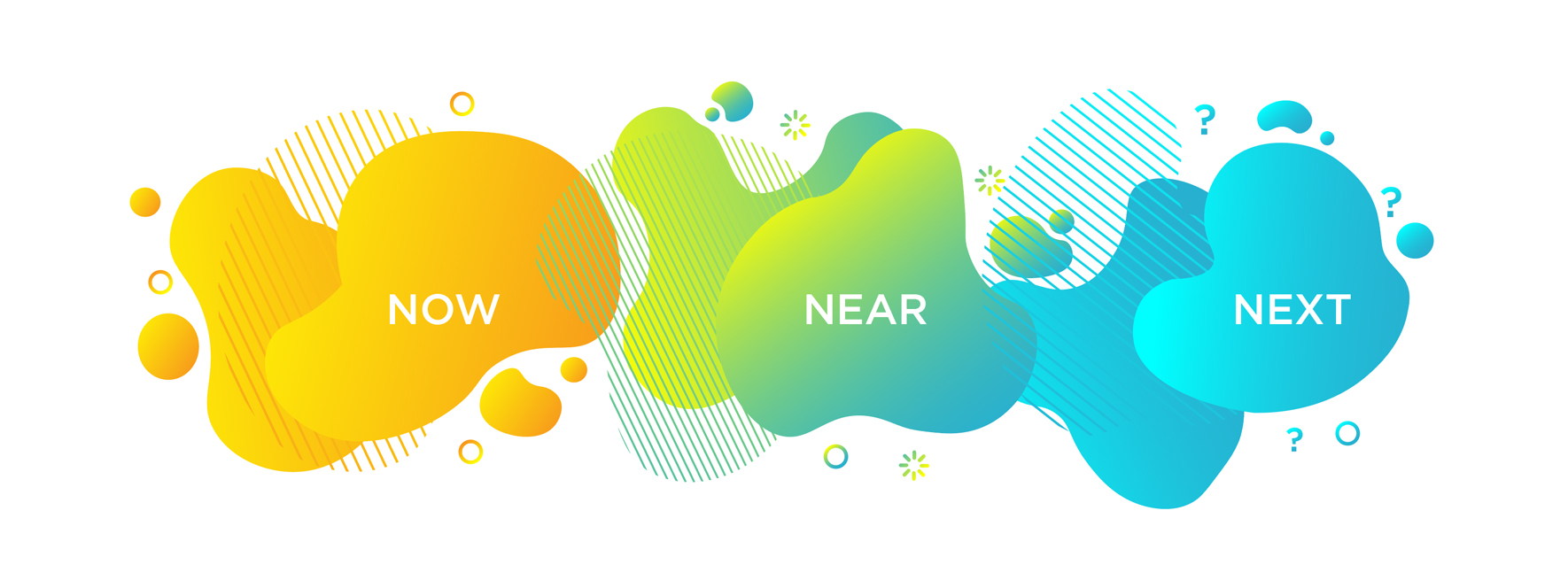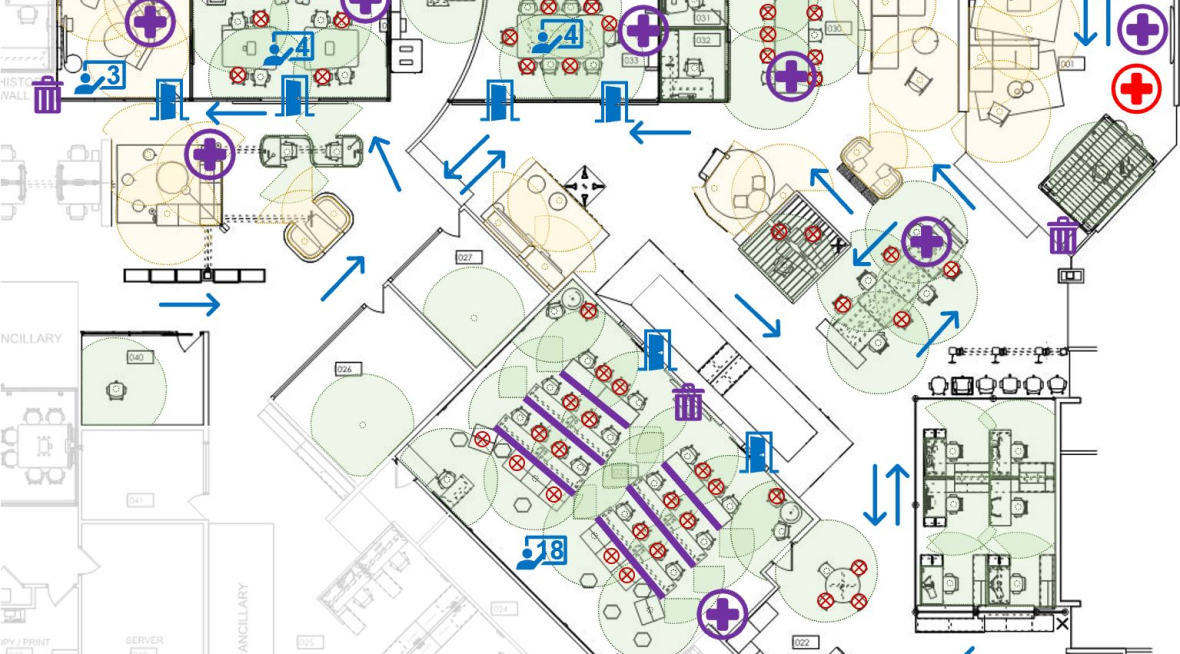Turn down the noise on how to return to work with a NOW/NEAR/NEXT mindset.
I know I’m adding to the daily, constant noise about how to return to work. Good gravy it’s loud out there, but I’ve found this structured thought process helpful when categorizing the theories circulating in today’s news cycle.
Guess what? We get to go back to the office!
Based on recent conversations, my guess is that statement either caused you to scream out “Yippee!” or “Oh Heck No!” I understand either way, and if you’re like me you land somewhere in the middle: super excited to be around people, but your inner hugger has become a tad germaphobic. Regardless of where you land, we all have varying degrees of uncertainty about going back to the office.
Here’s the thing, this crisis has highlighted the importance of the office and its ability to foster a sense of community and culture. This basic human need will drive people back to the office, but the health and safety of employees will be a top priority of employers to help decrease uncertainty and fear. This limbo of how-do-we, how-don’t-we, has created room for everyone to share their opinions on the best approach.
We’re asking big questions. How do we move forward? How will our physical environment change as our individual and collective needs change? What is the impact on cultural norms? This gets at the essence of how we design the environments where we work, learn, and heal. It’s a fascinating time that begs for organization so, I asked Marci Auston, Principal at OfficeScapes, to explain our approach:
“We’re working closely with other thought-leaders. We have a growing body of content and an emerging point of view about workplace planning in the Post COVID-19 era. We are thinking about it in a now/near/next framework, with physical, social, and change management tools to help clients evaluate their workplace and develop their own action plans.

NOW: Needs to be flexible
The two big themes for the “Now” are flexibility and retrofit. Flexibility refers to your mind and its ability to react to new information in addition to the actual flexibility of furniture. Retrofit is about assessing your current workplace and implementing physical and social tools that will increase the well-being of employees. Each client has a different set of needs, varying levels of risk aversion, and it’s clear that one cookie cutter solution will never address every problem.
We’re seeing requests for hand-washing and sanitation stations, a push to further integrate technology into the workplace to alleviate density problems, shields, screens, panels, signage, and so, so much more.
But heck, the first challenge is just getting to the office.
NEAR: Is fluid
And honestly, the furniture solutions are going to look a lot like the “Now” with one exception: more people will be back in the office. When you’re thinking about the difference between “Now” and “Near,” think about density (how many bodies are in the office) and lessons learned in the “Now” that can be applied to the “Near.”
Now = 50% of people back at work
Near = 75% – 100% of people back at work
We will continue to reconfigure furniture to accommodate more employees in the office while adhering to distance guidelines, and that furniture will need to be highly adaptable so it can change quickly should we see a spike in COVID-19 cases.
NEXT: Is unknown, and that’s okay
“While the farther horizon of “Next” is largely unknown, what remains true is that collectively we know how to design resilient spaces – sure, there are some important new considerations, but I, for one, find comfort in the fact that what we are experiencing is an accelerated evolution of a trajectory we were already on – and not a total reset.”
– Marci Auston
Buckle up friends. We’re entering the wild, wild west: The Post-COVID Workplace.
So much of the information you’re seeing right now is speculative. Some people believe the office is dead while others believe that office space will be in higher demand. Here’s what I know: new ideas will have to be scientifically based and supported by emerging technologies and right now, we’re in the data-gathering phase.
I also know that architects, interior designers, and furniture manufacturers/dealerships are in a unique position to help corporations solve this problem, which is why we’ve seen so many of their responses already:
- HOK – their WorkPlace leaders released a six-part series with topics ranging from remote working to future design strategies.
- Gensler – is exploring “how design can play a role in making the world a healthier place.”
- Blitz – published “A Hacker’s Guide”, which I tip-my-hat to for the fantastic image of people walking around with hula-hoops everywhere.
- DLR – looked at the future workplace through three perspectives: the building, the office, and the workstation in Resilient Workplace 2.0.
- Stantec– shared a survey-based guidebook, Getting Back to Business.
- Steelcase – they are publishing everything from Safe at Work playbooks that adopted lessons learned from their manufacturing floor to Design Applications for workstations and shared spaces.
Nobody can predict the future, but we can balance the need for real-time responses with the need for more data as we plan for unknown variables. We can work together as a team (client, designer, and furniture provider) to evaluate the needs of each client through the lens of their culture, work model, and location. Leaders that actively start to think about how their people will perform, and create a workplace that reflects the new norms, will have an advantage over competitors.
I’m a design junkie and a life-long learner so I’m enjoying every minute of this future-of-work conversation, but I get that the amount of information out there is overwhelming. For many this is creating a tornado of ideas with no foundation, which is why the NOW/NEAR/NEXT framework is so key. Feel free to borrow it as you sort through the never-ending opinions, ideas, and theories that are being published and talked about daily.

